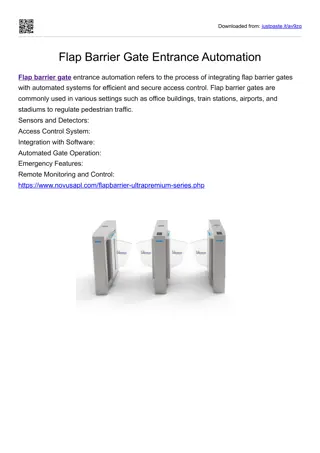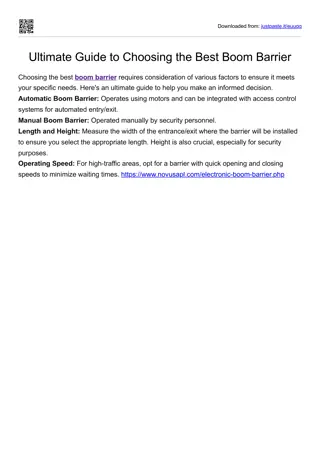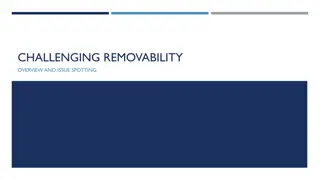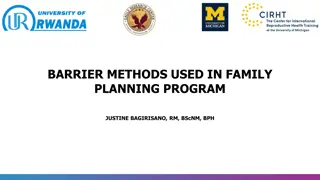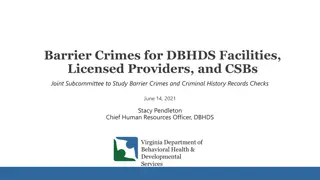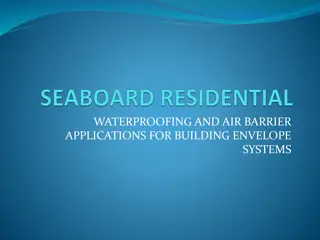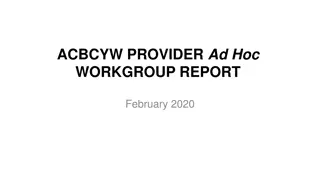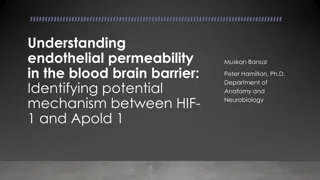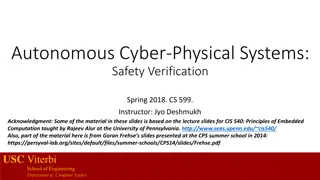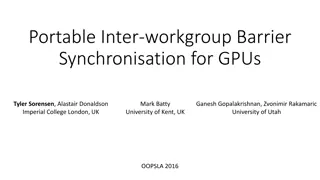
Provider Regulatory Requirements and Growth Analysis
The Department of Behavioral Health & Developmental Services is focusing on reducing licensed provider burden and enhancing growth in the industry. The initiatives include annual inspections, background checks, and reporting of incidents. The licensed provider growth has doubled over the past five years, showing a significant increase in services and locations. Efforts are being made to streamline regulatory requirements and support new providers through simplified application processes and policy templates.
Download Presentation

Please find below an Image/Link to download the presentation.
The content on the website is provided AS IS for your information and personal use only. It may not be sold, licensed, or shared on other websites without obtaining consent from the author. If you encounter any issues during the download, it is possible that the publisher has removed the file from their server.
You are allowed to download the files provided on this website for personal or commercial use, subject to the condition that they are used lawfully. All files are the property of their respective owners.
The content on the website is provided AS IS for your information and personal use only. It may not be sold, licensed, or shared on other websites without obtaining consent from the author.
E N D
Presentation Transcript
Reducing Licensed Provider Burden Dev Nair Assistant Commissioner for Provider Management Department of Behavioral Health & Developmental Services 1
Requirements for Providers Annual unannounced inspection of each services 37.2-411 Background checks 37.2-408,1, 37.2-416, 37.2-416.1 12VAC35-105-160.D 12VAC35-105-650 12VAC35-105-660 12VAC35-105-680 12VAC35-105-675 12VAC35-105-693 12VAC35-105-520 Report serious incidents and allegations of abuse/neglect within 24 hours Initial Assessment Individualized Services Plan Progress Notes Reassessments and ISP reviews Discharge Planning Risk Management - Identify, monitor, reduce, and minimize harms and risks of harm Quality Improvement - Identify, monitor, and evaluate clinical and service quality and effectiveness on a systematic and ongoing basis 12VAC35-105-620 2
Requirements for Providers Provider s authority to operate governed under the Code of Virginia and Administrative Code 37.2.400 et seq. - Human Rights 37.2.403 et seq. Licensing Providers 12VAC35-46 Regulations for Children s Residential Facilities 12VAC35-105 Regulations for Licensing Providers 12VAC35-115 Regulations to Assure the Rights of Individuals Receiving Services Types of Licenses Conditional newly licensed services; to demonstrate compliance with regulations Annual complaint with applicable regulations Triennial consistently compliant with regulations, no health and safety violations, Provisional unable to demonstrate compliance with regulations, serious health and safety violations 3
DBHDS Licensed Provider Growth Has Doubled Over Past 5 Years Much of that growth has been over the past 18 months 56% increase in providers 36% increase in services Provider Growth 5000 4500 2024 (July) 4000 2018 2020 2022 2023 3500 Providers 1,071 1,290 1427 2080 2221 3000 Services 2,780 3,200 3645 4583 4973 2500 2000 Locations 8,778 10,753 11,324 11,211 11,529 1500 1000 According to the National Association for Regulatory Administration (NARA), the national average caseload is 88 locations per licensing specialist. In Pennsylvania, the caseload may be as much as 120 per specialist. 500 0 2018 2020 2022 2023 2024 (July) Licensed Providers Licensed Services In Virginia, each licensing specialist has an average caseload of 339 locations. 4
Reducing Unnecessary Regulatory Requirements Initiatives Streamlined application process for new providers Reduced the number of documents reviewed prior to application approval Developed policy templates to assist providers with understanding requirements Increased technical assistance to applicants by Policy Review Specialists Delayed on-site inspections for non-residential services until after the issuance of a conditional license Implemented training for applicants and newly licensed providers Reduced amount of time on application wait list from >18 months to 2-3 days The average time to approve or deny a new application <30 days Over 98% of providers applying have their application approved <90 days The number of licensed providers increased by over 50% 5
Reducing Unnecessary Regulatory Requirements In Process Fast track action (Licensing Chapters 46 and 105) Reducing redundancy Eliminating requirements that are not necessary for health and safety Allowing greater flexibility in how providers comply with requirements Eliminate 385 requirements, representing 20% of licensing mandates Study to reduce regulation (HB2255/SB1155 and SB1544) DOJ impact Future look at accreditation 2024 Budget Item 295.OO.2 Review documentation and reporting requirements that apply to CSB direct care staff Eliminate requirements not essential to ensuring effective and timely services Regulatory reduction impact all providers Balance reduction in requirements with ensuring effective /evidence-based services and health & safety of individuals 6



